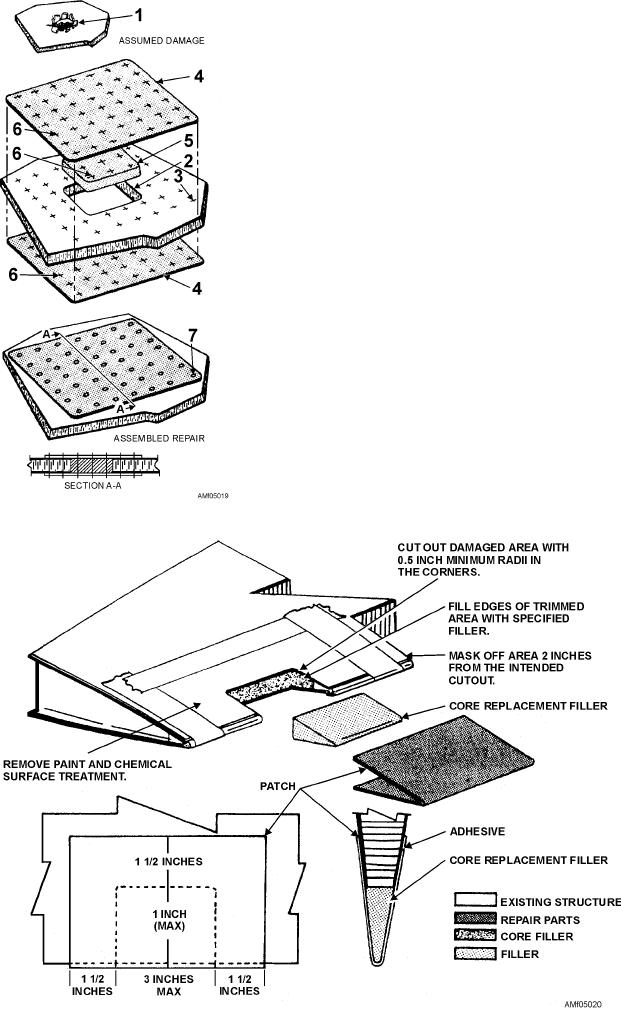
shape of the edge by tying the ends of a rib section
together and joining the upper and lower skins. These
trailing edges are very easily damaged. The majority of
this type of damage can be avoided if care is taken when
moving aircraft in confined spaces, and/or when
positioning ground support equipment around parked
aircraft. The trailing edges on some high-performance
aircraft are almost knife-edge in construction. You must
take extreme care when working around these surfaces
to avoid injury.
A typical trailing edge repair to a sandwich
construction assembly is shown in figure 5-20.
You may use the lap or flush patch, depending on
the size of the damage, the type of aircraft, and the
assembly or control surface to be repaired. Normally,
the flush patch is used on control surfaces to ensure
aerodynamic smoothness.
Q5-7. When repairing the surface of reinforced
plastics and sandwich construction lami-
nates, what should you use over the build-up
repair area to work out the excess resin and
air bubbles?
Q5-8. In addition to the stepped method, what other
method of repair may be used to ply damage
to solid laminates?
Figure 5-19.--Balsa wood repair with nonflush patch.
Figure 5-20.--Trailing edge repair (sandwich construction).
5-15

